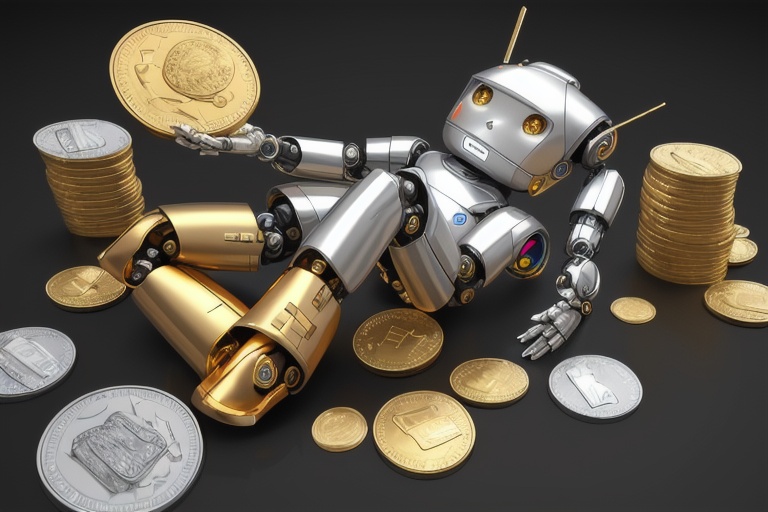Artificial intelligence (AI) and machine learning (ML) are at the forefront of technological innovation, transforming how we live, work, and interact with the world around us. They are no longer just buzzwords or concepts confined to research labs; AI and ML have become integral to the products and services we use every day. This article examines the latest trends in artificial intelligence, with a particular focus on the development and application of generative pre-trained transformers (GPTs) such as OpenAI's GPT-3, and the implications of these advancements on various industries.
Artificial intelligence (AI) and machine learning (ML) are at the forefront of technological innovation, transforming how we live, work, and interact with the world around us. They are no longer just buzzwords or concepts confined to research labs; AI and ML have become integral to the products and services we use every day. This article examines the latest trends in artificial intelligence, with a particular focus on the development and application of generative pre-trained transformers (GPTs) such as OpenAI's GPT-3, and the implications of these advancements on various industries.
The Emergence of Pre-Trained Models
Traditionally, building AI models was an undertaking that required an enormous investment of time, resources, and deep technical expertise. To train these models, organizations had to collect and process large datasets, design complex algorithms, and expend considerable computational power. However, the AI landscape has changed dramatically with the arrival of pre-trained models like GPT-3.
Pre-trained models are essentially huge neural networks that have been trained on extensive corpora of text. They have learned a wide array of patterns, structures, and nuances in language that enable them to perform a variety of language-related tasks without the need for additional training. OpenAI's GPT-3, one of the most powerful models to date, can generate human-like text, answer questions, translate languages, and even write code, all with a degree of proficiency that was previously unattainable.
The Impact of Advanced Hardware
In parallel with the software breakthroughs, advancements in hardware have been equally important in propelling AI forward. Cutting-edge processors and GPUs have been specifically designed to handle the enormous computational load that comes with training and running sophisticated AI models. This hardware acceleration has been crucial in reducing the time and energy required to power AI systems, making them more accessible and practical for everyday use.
AI Applications Across Industries
Leveraging pre-trained models alongside improved hardware has broadened the potential for AI applications in countless domains. Let's take a closer look at how these developments are shaping various sectors:
Healthcare
In healthcare, AI is revolutionizing diagnostics, personalized medicine, and patient care. Machine learning algorithms can process medical images to assist in early disease detection, while AI-driven analytics can help in predicting patient outcomes and personalizing treatment plans.
Finance
The financial industry is leveraging AI for fraud detection, risk management, and automated customer service. AI systems can analyze transaction patterns to spot fraudulent activities in real-time and provide personalized financial advice to clients through intelligent chatbots.
Education
AI is also making waves in education by providing adaptive learning systems that tailor educational content to the needs of individual students. This technology can evaluate the progress of learners, identify areas that require reinforcement, and provide customized resources to support their development.
Entertainment
In entertainment, AI has paved the way for new forms of content creation and consumption. GPT-3 has been used to write scripts, compose music, and even create art. These creative applications demonstrate the potential of AI to not only replicate but also augment human creativity.
Ethical and Regulatory Challenges
As AI continues to permeate various facets of society, it's crucial to address the ethical considerations and regulatory challenges that accompany its adoption. The responsible use of AI involves ensuring privacy, fairness, and accountability in AI-driven decisions. Additionally, there's a growing need for regulations that guide AI development and deployment, prevent misuse, and protect societal well-being.
Embracing AI Responsibly and Ethically
Organizations looking to harness the power of AI must do so responsibly and ethically. By staying informed about the latest hardware and software advancements, as well as the ethical frameworks and regulations surrounding AI, businesses can capitalize on the vast opportunities AI offers. Embracing AI in this manner can fuel innovation, streamline operations, and generate unprecedented value across industries.
In summary, the AI landscape has reached a tipping point with the convergence of sophisticated pre-trained models like GPT-3 and breakthroughs in hardware capabilities. This convergence has made AI more achievable and impactful than ever before. As we continue to explore the vast possibilities of AI, it is imperative that we navigate the terrain thoughtfully, balancing the drive for innovation with a commitment to ethical responsibility.
Information for this article was gathered from the following source.


